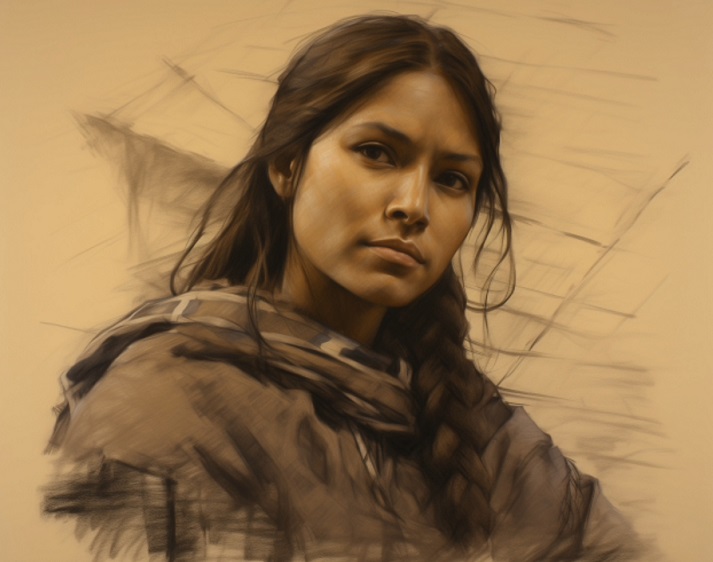Contributor: Elephango Editors. Lesson ID: 12258
Meet the teen who helped shape a nation—without even getting paid!

She Carried a Baby on Her Back—and the Expedition on Her Shoulders
Imagine going on a dangerous journey through unexplored land. You don’t have a map, the weather is unpredictable, and you don’t speak the languages of the people you meet.
Now, imagine doing all of that with a newborn baby strapped to your back.
That’s exactly what Sacagawea did!
Without her help, the famous journey of Lewis and Clark might have failed.
Explore how Native Americans—especially Sacagawea—played a major role in one of the most important explorations in U.S. history.
Who Was Sacagawea?
Sacagawea (pronounced sah-cah-guh-WEE-uh or sometimes spelled Sacajawea) was born in 1788 into the Lemhi Shoshone tribe in what is now Idaho.
When she was around 12, she was kidnapped by the Hidatsa, another Native American tribe, and taken to their village in present-day North Dakota. A French Canadian fur trader named Toussaint Charbonneau later bought her and made her his wife.

When she was about 16 and pregnant with her first child, two explorers—Meriwether Lewis and William Clark—arrived.
They were leading a team called the Corps of Discovery, sent by President Thomas Jefferson to explore the new land from the Louisiana Purchase. They needed a guide who could help them survive the journey, communicate with Native American tribes, and find a safe path to the Pacific Ocean.
They hired Charbonneau, but only because Sacagawea would come too.

A Token of Peace
Sacagawea gave birth to her son, Jean-Baptiste, just before the expedition began. She carried him on her back as she traveled with Lewis and Clark across thousands of miles.
Her presence was powerful. Many Native American groups were more willing to talk when they saw her—especially with a baby—because it showed the group meant no harm.
In fact, Lewis and Clark wrote in their journals that a woman with a group of men was a “token of peace.”

Bravery and Skill
Sacagawea did much more than translate languages. She gathered plants, picked berries, dug up roots, and helped the group know what was safe to eat. She pointed out new animals and plants the men had never seen before.
One time, when a boat capsized during a storm, she jumped into the water and saved important journals, maps, and supplies. Without those, the entire journey could have been a waste.
Another time, the expedition desperately needed horses. They found a Shoshone group that had horses for trade.
As it turned out, their leader was Sacagawea’s brother—Chief Cameahwait. She hadn’t seen him since she was taken years before. Their reunion helped the group get the horses they needed to keep going.

The Final Stretch
The journey wasn’t easy. The explorers faced freezing weather and ran out of food. At one point, they were so hungry, they ate candles to survive.
Sacagawea helped again, digging roots and cooking food to help them recover.
She even gave up something personal—a special beaded belt—to trade for a fur robe the team wanted to give President Jefferson.
After more than two years, the journey ended in St. Louis. Her husband was paid over $500 and received land. Sacagawea, who may have saved the entire expedition multiple times, got nothing.
Remembering Sacagawea
Even though she wasn’t rewarded at the time, Sacagawea is now remembered as one of the most important figures in American history.
Her face is on the golden $1 coin. Some people say that’s a great tribute. Others say it’s not enough.

Now that you’ve learned how Native Americans—especially Sacagawea—helped Lewis and Clark, it’s time to test your memory and make some connections.
Head to the Got It? section for your review and practice activities.